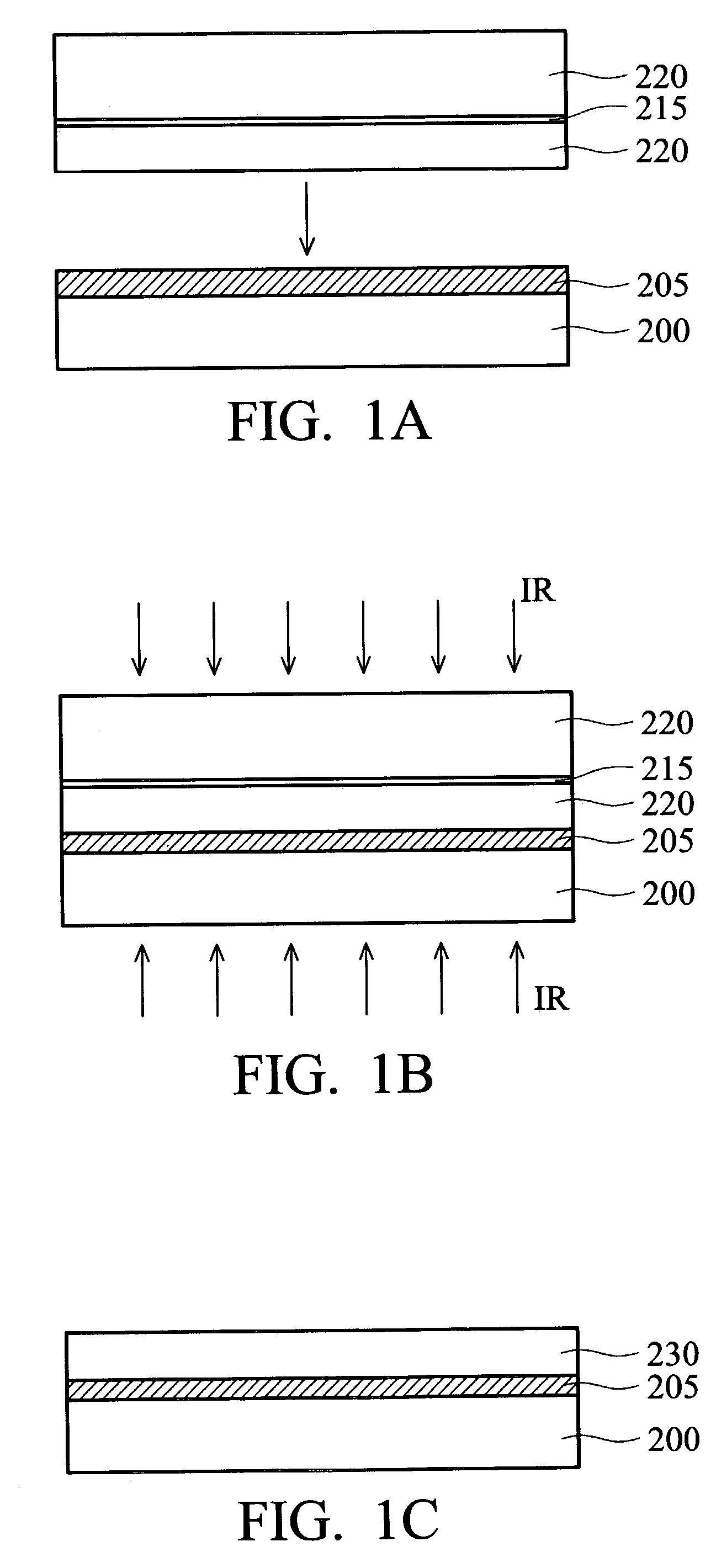Method for forming a single-crystal silicon layer on a transparent substrate
a technology of transparent substrate and single crystal silicon, which is applied in the direction of layered products, basic electric elements, chemistry apparatus and processes, etc., can solve the problems of poor panel performance, poor suited plastic substrate to the manufacturing process, and high cost, and achieves high thermal expansion coefficient, static and large thermal expansion coefficient, and severe stress
- Summary
- Abstract
- Description
- Claims
- Application Information
AI Technical Summary
Benefits of technology
Problems solved by technology
Method used
Image
Examples
example
[0015]FIGS. 1A˜1C illustrate cross sections of the embodiment of the invention.
[0016]In FIG. 1A, a transparent substrate 200 having an amorphous silicon layer 205 formed thereon and a silicon wafer 220 with a hydrogen ion layer 215 are provided. In this embodiment, glass is used as the transparent substrate 200. The hydrogen ion layer is formed by doping under the following conditions: dosage 1×1016˜5×1017 cm−2; energy 10˜1000 keV and doping depth of 0.1˜15 μm.
[0017]Next, as shown in FIG. 1B, the silicon wafer 220 is inverted and laminated onto the amorphous silicon layer 205, followed by exposure to infrared (IR). At this stage, part of the silicon wafer is between the hydrogen ion layer 215 and the amorphous silicon layer 205. IR then passes through the non-infrared absorbent glass substrate 200 and the amorphous silicon layer 205 to cause chemical bonding of the infrared-absorbing single-crystal silicon and the amorphous silicon layer 205. When heating to a certain high temperatu...
PUM
| Property | Measurement | Unit |
|---|---|---|
| energy | aaaaa | aaaaa |
| depth | aaaaa | aaaaa |
| temperature | aaaaa | aaaaa |
Abstract
Description
Claims
Application Information
 Login to View More
Login to View More - R&D
- Intellectual Property
- Life Sciences
- Materials
- Tech Scout
- Unparalleled Data Quality
- Higher Quality Content
- 60% Fewer Hallucinations
Browse by: Latest US Patents, China's latest patents, Technical Efficacy Thesaurus, Application Domain, Technology Topic, Popular Technical Reports.
© 2025 PatSnap. All rights reserved.Legal|Privacy policy|Modern Slavery Act Transparency Statement|Sitemap|About US| Contact US: help@patsnap.com


